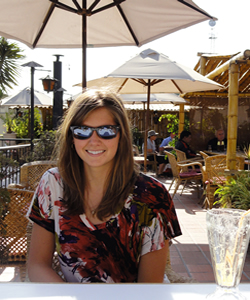After wrapping up a month in Lima I felt as though I still didn'’t understand the crosscutting roles that race and religion have on Peruvian culture. I have just as many questions at the end of a month in Chile, but they are of an entirely different character. There is nothing ambiguous about race or class in this country; on the whole, I'd say that Chileans like to know where they stand. As a country, they situate themselves in reference to their neighbors—clearly better, whiter, richer, and more cultured than Bolivians and Peruvians (some, like my host grandmother, will tell you this outright), but willing to look to Argentina for taste in music (though they are certain their wine is better) and to North America and Europe to set the standards for how to live a cultured life. As individuals, Chileans situate themselves within an extremely stratified social system where class and whiteness play an important role. In her novel, Paula, author Isabel Allende asserts that Chile has more of a caste system than India. Deven Comen and I can discuss that proposition back at Georgetown.
A former Hoya who now lives in Santiago went with me to watch an Equestrian Show at the Military School last Saturday. We were shocked by how much the attendees looked like the Sunday brunch crowd in Georgetown. This was the upper crust of Santiago, dressed in Ralph Lauren and gold watches. As I began chatting with my friend about my research on the dictatorship, it slipped my mind that to this day the divisions of class point to political persuasions and lingering emotions about the Pinochet era. Our conversation was in Spanish, and I was startled when a woman two seats down kindly leaned down and advised us that we might not have picked the right venue to speak about our opinions on human rights abuses under the regime: “many of the people here played a role in that government,” she whispered to us. And almost all of the women wore gold crosses around their necks.
Earlier last week, I interviewed Father Jose Aldunate, S.J., a 92-year-old blind Jesuit who has been the recipient of numerous international awards for his work as a defender of human rights under the regime. As he told me stories of torture, detainment, exiles, and assassinations and the work that the official Church tried to do in opposition, I struggled to understand why Pinochet was able to maintain such incredible support after 15 years of ruling oppressively and violently.
Roman Catholics make up a huge majority (around three quarters) of the Chilean population. So how is it that the country is divided nearly 50-50 in their opinions on the dictatorship? How could it be that half of the country’s Christians were inspired by their faith to fight for human rights and the other half of them used that same faith to defend the military regime?
Another Jesuit that I met here explained to me that although Chile had a progressive archbishop who created the Vicaria de Solidaridad and faith-based community groups that served as points of mobilization against the regime, there is a huge sector of the Catholic population in the country that thought Marxism was a greater threat to the country than the dictator was. Aldunate said, about those individuals, “"Yes, they are Catholic, but not in the same way I am.”"
The divisions in this country, according to professors, my host family, and my Chilean friends, are never going to go away. And yet, they all cut through one faith.

